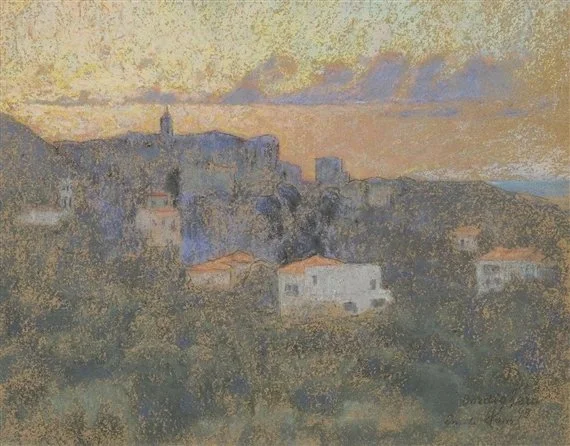The Light of Bordighera
Emile Claus, Ampelio, Old Fisherman of Bordighera, 1898, oil on canvas
As I shamelessly skipped last week’s blog in favour of devoting myself to fun in the sun on the Italian Riviera’s Flower Coast (so called due to its once large production of flowers), I thought it only right to highlight one of the coast’s most famous towns - Bordighera.
Located near the border with Nice, Bordighera attracted many an artist, poet and aristocrat over the centuries.
Among the artists was Claude Monet, who traveled to Bordighera in 1884 planning to stay for three weeks and staying for three months. “Fencing, wrestling, with the sun” was how he explained in a letter to Auguste Rodin his efforts to capture the magic of Bordighera’s light on canvas.
Monet painted several views of Bordighera. The image below is one of my favourites, showing old town Bordighera much as it remains today, perched high on a hill (safely tucked away from the Saracens), above what had in the 1800s grown into the main seaside resort.
Claude Monet, Bordighera, 1884, Art Institute of Chicago, Chicago, IL, USA
By contrast, the view below is of the main seaside resort the streets of which - aside from the magnificent belle époque architecture which enchants to this day - have greatly transformed with modern conveniences of all sorts.
According to Musee d’Orsay where this painting is housed, Monet intended to gift it to Berthe Morisot as a panel for her drawing room. The subject matter is the garden of one Mr. Moreno. Catching the play of the light through the trees, Monet described the garden as “an earthly paradise … pure fantasy, all the plants in the world grow outside here and do not seem to be tended: it is a tangle of all the varieties of palm trees...".
Claude Monet, Les Villas a Bordighera, 1884, Musee d'Orsay, Paris
Much as I love Monet’s work, my favourite view of Bordighera from that epoch is the lead image of this post, an absolutely beautiful work by the Belgian painter Emile Claus.
The painting shows the Ampelio church located off of what is now the Bordighera promenade, with an old fisherman drenched in sunlight and years of hard life featured prominently above two distant figures of aristocratic ladies with parasols strolling along the coastal walk.
Influenced by Monet whose works he saw during trips to Paris in the 1890s, Claus developed a style that became known as luminism. In 1904, he started the artist group Vie et Lumière ('Life and Light') before shifting, like Monet, towards impressionism. Claus painted the Ampelio in 1898 and several other works of the Bordighera landscapes (like the hill views below) in 1899, which suggests that he stayed in Bordighera around that time.
Emile Claus, View of Bordighera, 1899, pastel on canvas
Happy sunshine everyone!




